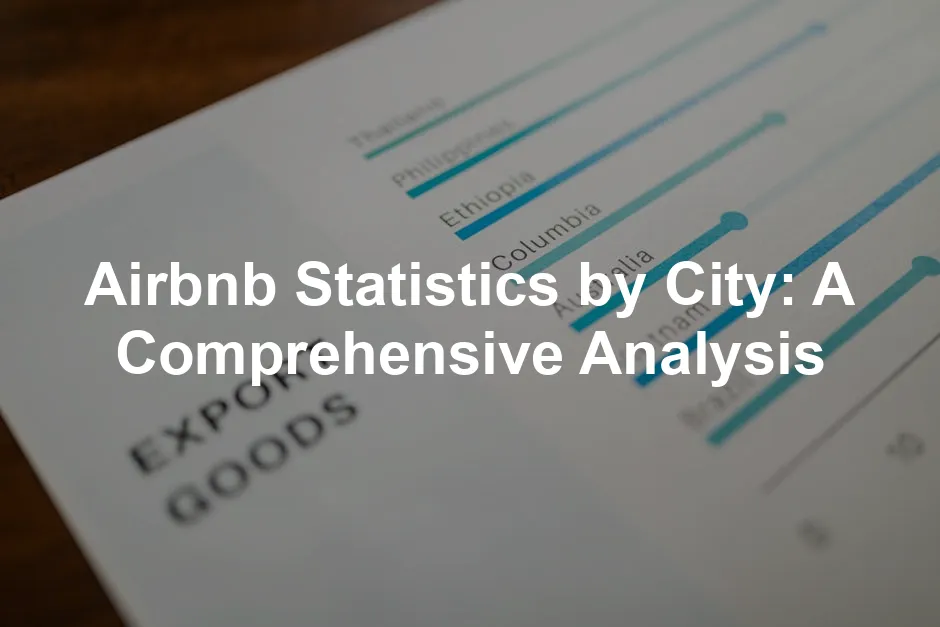Introduction
Airbnb statistics are like the compass for hosts, investors, and travelers. They guide decisions, help maximize profits, and reveal hidden opportunities. For hosts, understanding occupancy rates and average daily rates (ADR) can mean the difference between a thriving rental and an empty space. Investors use these figures to identify lucrative markets. Travelers? They want to know where to find the best deals and experiences.
In this article, we’ll cover essential statistics such as occupancy rates, average daily rates, and revenue insights. We will also provide city-specific insights, so you can see which areas are hot and which are not. By recognizing these trends, you can make informed decisions that could lead to better investments or unforgettable trips. If you’re just starting out or looking to refine your hosting skills, grab The Airbnb Expert’s Playbook to set yourself up for success!
As the short-term rental market evolves, it’s crucial to keep an eye on changing dynamics in various cities. Trends can shift quickly, influenced by economic factors or local events. So, whether you’re hosting, investing, or planning your next getaway, understanding Airbnb statistics is key to navigating this landscape successfully.

Understanding Airbnb Statistics
What Are Airbnb Statistics?
Airbnb statistics encompass various metrics that highlight a property’s performance. Key terms include:
- Occupancy Rate: This is the percentage of booked nights versus available nights in a given timeframe. High occupancy rates often indicate strong demand.
- Average Daily Rate (ADR): This figure represents the average rental income per occupied room, calculated by dividing total rental income by the number of nights booked.
- Revenue per Available Room (RevPAR): This combines occupancy rate and ADR to provide a more comprehensive view of a property’s financial performance. It is calculated by multiplying the occupancy rate by the ADR.
Why Are These Statistics Important?
Statistics play a pivotal role in shaping pricing strategies and investment decisions. They help hosts set competitive rates, ensuring bookings without underpricing. For investors, analyzing these figures reveals market trends and guest preferences. Understanding shifts in demand allows for strategic positioning, whether it’s optimizing listings or targeting specific demographics.
By leveraging Airbnb statistics, hosts can tailor their offerings to meet traveler expectations. This insight fosters a better guest experience, leading to positive reviews and repeat bookings. In the fast-paced world of short-term rentals, staying informed is not just beneficial; it’s essential for success. And to ensure your space stands out, consider investing in Smart Home Devices for Airbnb Hosts to enhance guest convenience!
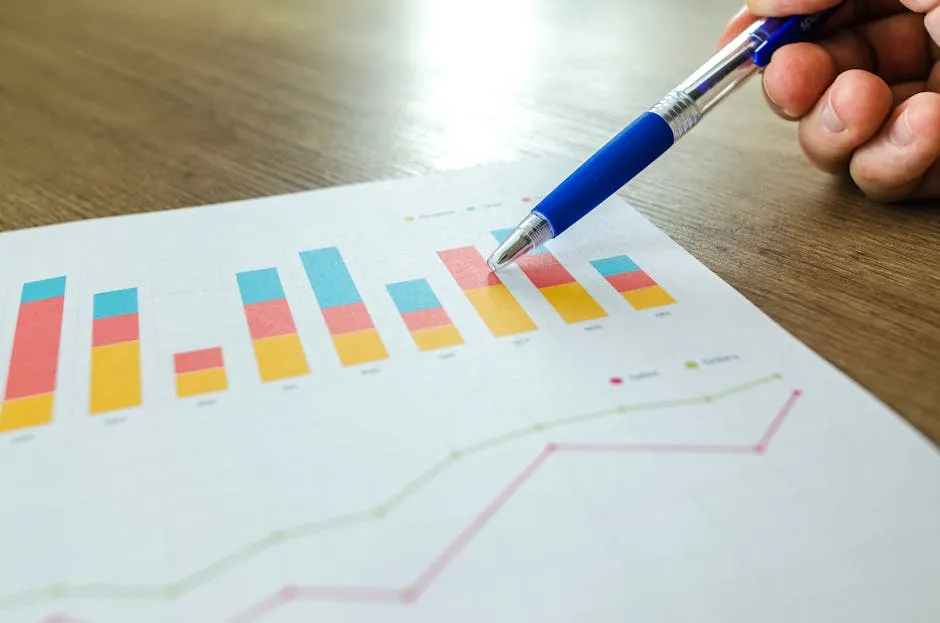
Key Airbnb Statistics by City
U.S. Cities
Overview of U.S. Airbnb Market
The U.S. Airbnb market is buzzing with activity! As of 2023, there are over 1.5 million active listings across the country. That’s a lot of homes, apartments, and castle-like structures vying for attention! The average occupancy rate for these listings hovers around 48%, but let’s not forget that some cities outperform others dramatically. For instance, popular tourist destinations often see occupancy rates soar above 70%. This means that while some listings are gathering dust, others are practically overflowing with guests.
Understanding this landscape is crucial for hosts and investors alike. After all, the goal is to cash in on those sweet rental profits. With the right insights, you can position yourself in a winning market! For those looking to learn the ropes, Airbnb for Dummies is a fantastic starting point.

Top Cities for Airbnb Occupancy Rates
| City | Active Airbnb Listings | Avg. Airbnb Occupancy Rate |
|---|---|---|
| Kissimmee, FL | 46,569 | 84% |
| Miami, FL | 22,485 | 38.1% |
| Austin, TX | 25,149 | 33.9% |
| San Diego, CA | 24,787 | 37.9% |
| Atlanta, GA | 31,422 | 28.7% |
Kissimmee, Florida, is the undisputed champion with a whopping 84% occupancy rate! That sun-and-fun destination is a magnet for visitors. Meanwhile, Miami, with its vibrant nightlife, still manages to maintain a respectable occupancy rate, despite being a more competitive market. To keep your guests entertained, consider equipping your property with a Ring Video Doorbell Pro for added security and convenience!

Top Cities for Average Daily Rates
| City | Avg. Daily Rate ($) |
|---|---|
| Aspen, CO | 1,692 |
| Malibu, CA | 1,549 |
| East Hampton, NY | 995 |
| Nantucket, MA | 935 |
| Vail, CO | 890 |
Aspen, Colorado, tops the charts with its sky-high ADR. It’s not just the snow that keeps prices up; luxury amenities and ski resort proximity play a huge role. Similarly, Malibu’s beachy charm brings in a premium. Travelers are willing to splurge for a taste of the high life! To ensure your property is as appealing as those in high-demand areas, consider investing in an Instant Pot Duo 7-in-1 Electric Pressure Cooker. Guests love the convenience!

Revenue Insights by City
| City | Avg. Monthly Revenue ($) |
|---|---|
| New York, NY | 3,500 |
| Los Angeles, CA | 2,800 |
| San Francisco, CA | 2,500 |
| Miami, FL | 2,200 |
| Chicago, IL | 1,800 |
New York leads the pack, bringing in an average monthly revenue of $3,500. The sheer volume of tourists and diverse attractions keeps the bookings flowing. The analysis also indicates that amenities such as pools, hot tubs, and proximity to attractions significantly enhance revenue potential. It’s about creating an experience that guests can’t resist! If you’re looking to create that irresistible atmosphere, consider adding a Ninja Professional 72oz Countertop Blender for smoothie-loving guests!

International Cities
Overview of International Airbnb Markets
When we look at the Airbnb markets globally, it’s like comparing apples to oranges—if those apples were on a tropical vacation! The U.S. market often takes the limelight, but countries like Canada, the UK, and Australia have their own rising stars.
In the U.S., there are about 1.5 million active listings, with an average occupancy rate of around 48%. Kissimmee, Florida, is the crown jewel here, boasting an impressive occupancy rate of 84%. Meanwhile, Canada’s market, particularly in cities like Toronto and Vancouver, shows strong competition with occupancy rates hovering around the mid-20s and high-30s.

The UK presents a different flavor, with London having approximately 156,511 active listings but a lower occupancy rate of 15.2%. Ouch! Yet, cities like Edinburgh shine with occupancy rates of 24.8%. If you’re considering expanding your investments internationally, The Book on Rental Property Investing is a must-read!
Australia’s market is equally fascinating. Sydney holds the spotlight with 60,641 listings, but the occupancy rate is just 15.5%. Melbourne is also notable, with a rate of 20.3%. So, while U.S. markets are thriving, international markets are carving out their own niches, often influenced by local tourism trends, regulations, and seasonal demand.

Top Cities for Occupancy Rates (International)
| City | Active Airbnb Listings | Avg. Airbnb Occupancy Rate |
|---|---|---|
| London, UK | 156,511 | 15.2% |
| Sydney, AU | 60,641 | 15.5% |
| Toronto, CA | 42,742 | 23.1% |
| Vancouver, CA | 12,463 | 32.2% |
| Edinburgh, UK | 18,002 | 24.8% |
| Montreal, CA | 35,872 | 22.3% |
London may have all the sights, but its occupancy rate leaves much to be desired. In contrast, Toronto and Vancouver enjoy higher rates, with Vancouver even boasting a 32.2% occupancy! Meanwhile, as travelers flock to Edinburgh, its 24.8% indicates a growing demand for short-term rentals in historical settings. If you’re looking for ways to enhance your property, check out the Nest Learning Thermostat to keep guests comfortable!

Top Cities for Average Daily Rates (International)
| City | Avg. Daily Rate ($) |
|---|---|
| Paris, FR | 250 |
| Amsterdam, NL | 230 |
| London, UK | 215 |
| Zurich, CH | 190 |
| Melbourne, AU | 180 |
| Montreal, CA | 175 |
Paris tops the charts with an ADR of $250, proving it’s worth the splurge for a croissant with a view! Amsterdam and London follow closely behind, showcasing the allure of these iconic cities. Meanwhile, Zurich’s ADR of $190 reflects its status as a premium destination. It’s clear that travelers are willing to pay more for unique experiences in these vibrant locations. To help you create memorable experiences, consider providing a Philips Hue White and Color Ambiance Smart Bulb to set the mood!
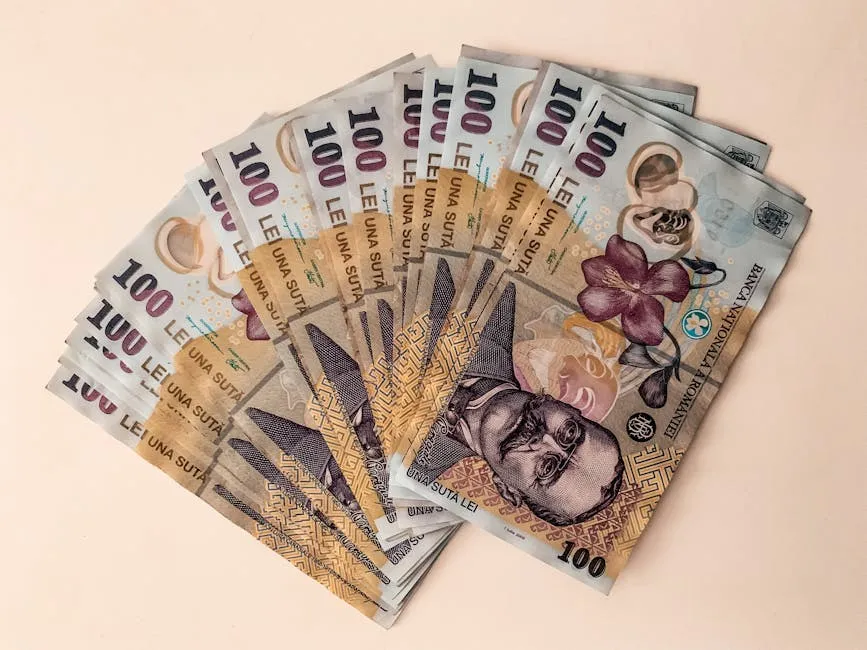
Revenue Insights by City (International)
| City | Avg. Monthly Revenue ($) |
|---|---|
| Paris, FR | 5,000 |
| London, UK | 4,500 |
| Sydney, AU | 3,800 |
| Toronto, CA | 3,600 |
| Montreal, CA | 3,200 |
Paris leads with an average monthly revenue of $5,000, thanks to its year-round tourist appeal. London isn’t far behind at $4,500, but with its high cost of living, that revenue doesn’t go as far. Interestingly, Sydney and Toronto are also seeing solid revenue figures. Local tourism trends, such as events and festivals, significantly impact these numbers. For instance, Sydney’s summer months attract beachgoers, while Toronto sees spikes during its film festivals. To keep your guests entertained during their stay, a Portable Bluetooth Speaker can be a hit!
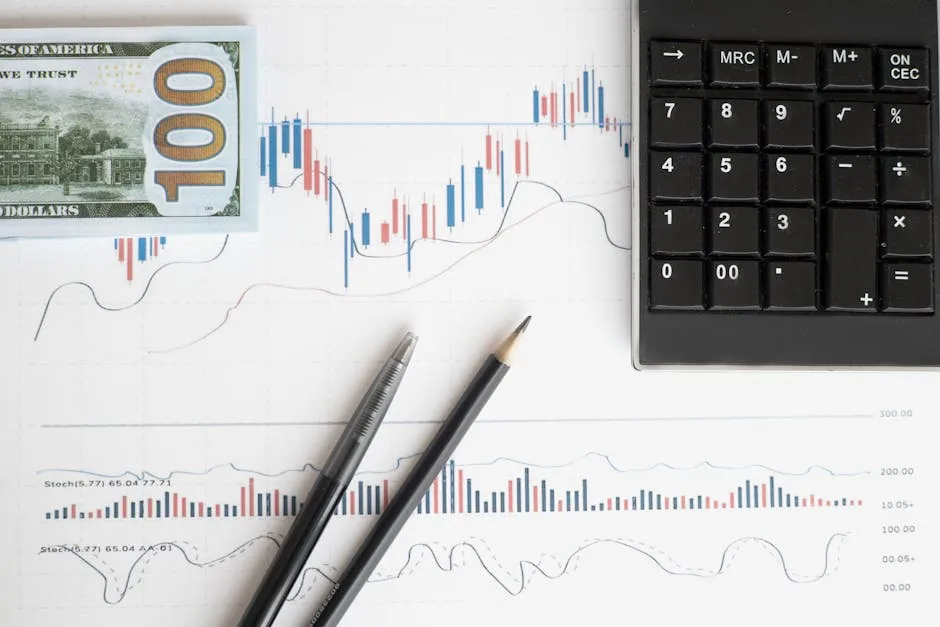
In essence, understanding these revenue insights helps hosts and investors identify lucrative opportunities. A city buzzing with events or attractions can mean the difference between a quiet month and a bustling one!
Seasonal Trends and Market Fluctuations
Understanding Seasonal Variations
Airbnb occupancy rates can swing like a pendulum, heavily influenced by seasons and local events. In ski resorts, winter is peak season. Think snowflakes, hot cocoa, and cozy firesides. These destinations see occupancy rates skyrocket during winter months. In contrast, beach towns bask in the sun during summer. Picture beach umbrellas, sunscreen, and flip-flops!
Take Aspen, Colorado, for example. Winter activities entice throngs of visitors, pushing occupancy rates to a staggering 90% during peak ski season. On the flip side, towns like Fort Lauderdale, Florida, are bustling in the summer, with occupancy rates soaring as sun-seekers flock to the beaches. To keep your property in top shape for those busy seasons, consider investing in Travel Toiletry Bag for your guests’ convenience!
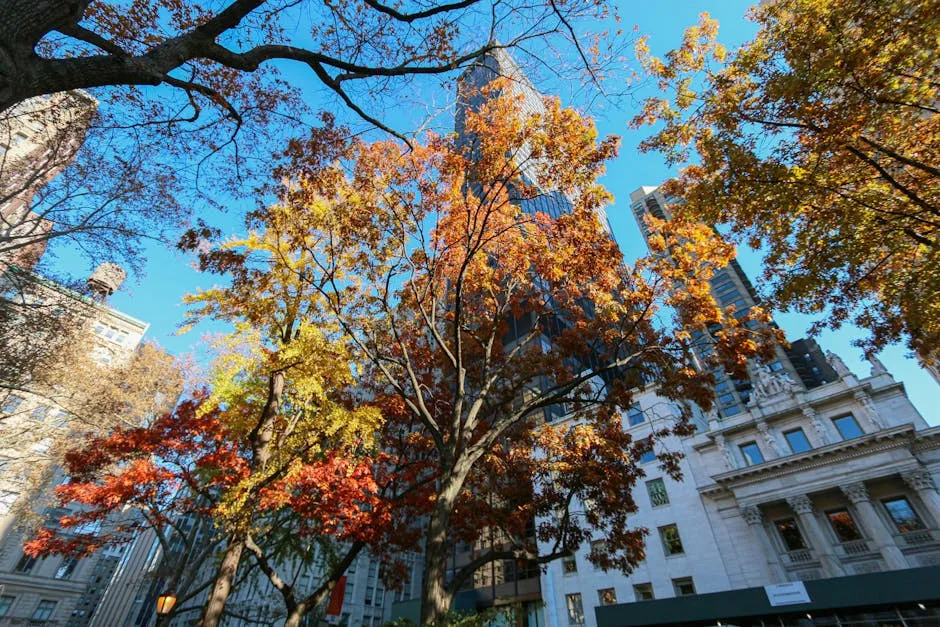
Special events also play a significant role. Cities hosting major festivals or conventions witness spikes in bookings. New Orleans, with Mardi Gras, transforms into a bustling hub of activity, leading to occupancy rates that can exceed 95%.
Conversely, during off-peak seasons, many cities experience a downturn. For instance, Las Vegas may see lower occupancy rates in the summer heat as visitors prefer cooler months for their escapades. Understanding these seasonal variations helps hosts strategize effectively.
Strategies for Navigating Seasonal Trends
So, how can hosts keep their occupancy rates from taking a nosedive during the quieter months? Here are some tips to optimize your occupancy during off-peak seasons:
- Adjust Pricing: Lower your nightly rates during off-peak times. Competitive pricing can attract budget-conscious travelers.
- Highlight Unique Features: Promote any unique amenities or experiences your property offers. A hot tub in a winter setting? Yes, please!
- Offer Discounts for Longer Stays: Encourage extended visits by providing discounts for weekly or monthly bookings. This strategy can fill gaps in your calendar.
- Leverage Local Events: Keep an eye on local events and festivals. Offer special packages or promotions tied to these happenings.
- Optimize Your Listing: Use seasonal keywords in your listing to attract attention. Think “cozy winter retreat” or “summer beach escape.”
- Engage Previous Guests: Reach out to past guests with special offers to entice them back during off-peak times. Everyone loves a good deal!
- Enhance Your Marketing: Use social media to showcase seasonal activities in your area, attracting visitors who want to join the fun.

By applying these strategies, hosts can navigate the ebb and flow of occupancy rates successfully, ensuring their Airbnb remains a popular choice throughout the year. And don’t forget to stock up on essentials for your guests, like a Travel Pillow with Memory Foam for those long journeys!
Conclusion
In this exploration of Airbnb statistics by city, we uncovered crucial insights into seasonal trends and market fluctuations. Understanding how occupancy rates shift with the seasons is vital for hosts and investors aiming for success in the Airbnb landscape.
Arming yourself with data on seasonal variations can lead to more strategic decision-making. By optimizing pricing, leveraging local events, and enhancing marketing efforts, hosts can maintain consistent occupancy rates, even during quieter months. And don’t overlook the power of great tools; a Portable Phone Charger with Wireless Charging can save the day!
In a world where trends are ever-changing, staying informed about Airbnb statistics is your best bet for success. Use this data to make better-informed decisions, ensuring your Airbnb venture thrives year-round. Happy hosting!
FAQs
What is a good occupancy rate for Airbnb?
A solid occupancy rate is about 70%. This benchmark indicates healthy demand. However, the national average hovers around 48%. Rates above 65% are often considered high, with some markets reaching impressive figures like Kissimmee, Florida, at 84%. It’s essential to analyze local trends since occupancy varies widely by city.
How can I find Airbnb statistics for my city?
Several tools and resources can help. Websites like Airbtics provide local data by entering your address. You can also explore the Airbnb City Portal for insights on local travel trends. Other platforms like Inside Airbnb offer comprehensive statistics on occupancy rates and rental performance. Don’t forget to check local real estate analytics sites too!
What factors influence the average daily rate?
Average Daily Rate (ADR) is influenced by several factors. Location is critical; urban areas often command higher prices. Amenities matter too—properties with pools or hot tubs attract more guests. Seasonality plays a role as well; ski resorts thrive in winter, while beach towns flourish in summer. Keeping an eye on local events can also boost prices.
How do COVID-19 trends impact Airbnb statistics?
COVID-19 significantly altered Airbnb dynamics. Initially, many markets faced plummeting occupancy rates. However, as travel resumed, short-term rentals became favored for social distancing. This shift led to a resurgence in bookings, especially in rural and less densely populated areas. Awareness of these trends helps hosts adapt to changing market conditions.
Please let us know what you think about our content by leaving a comment down below!
Thank you for reading till here 🙂
For detailed insights into Airbnb statistics by city, you can refer to our article on Airbnb statistics by city.
All images from Pexels

